Human Connection in Deeper Learning
Key Points
-
What is the answer to deeper learning? Human connection.
-
West Allis School District has been so cohesive because it has built a strategy and identity around deeper learning, in turn choosing its identity.
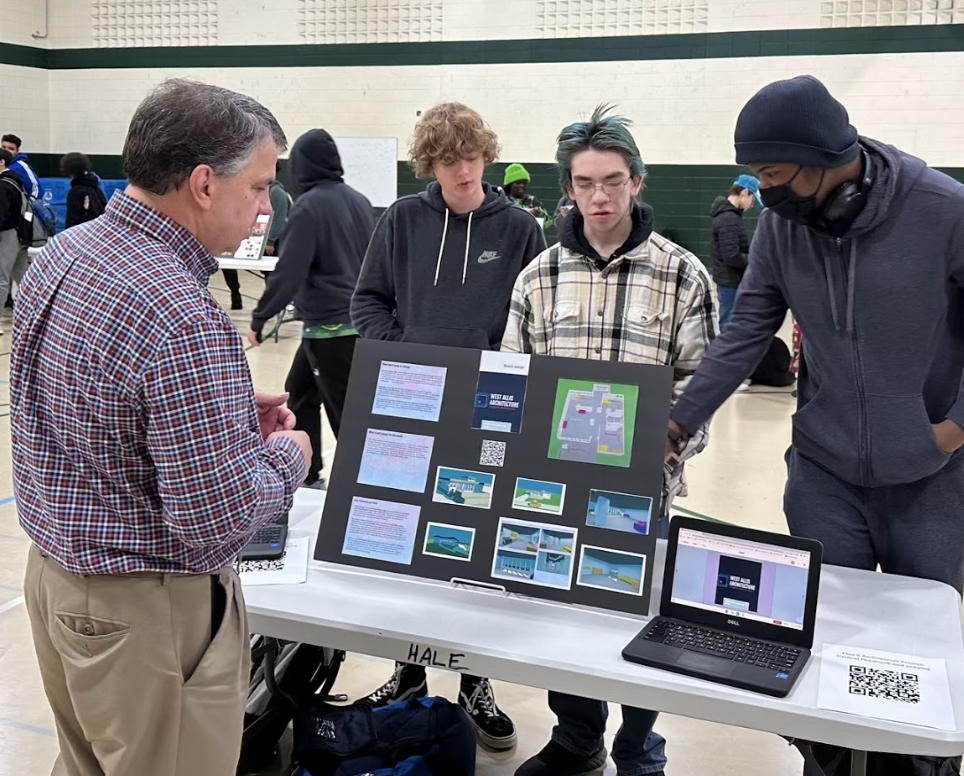
My foray into education began through storytelling. My first job in the field was as the Webmaster for an incredible K-12 independent school on Hawai’i Island. That led me to teach Digital Journalism, and eventually become the K12 Capstone Coordinator. I realized over that decade, that the most important skill to the website, the classroom, and academic programs I was co-creating was human connection. It was the competency that formed the culture. So you can imagine how overjoyed I was when I saw this same skill exemplified at scale, and at a level, I only dreamed of, in a large public school district in West Allis, Wisconsin.
In February of 2022, I sat in a cliche hotel ballroom that so many of us experienced when attending an education conference and before me was the Assistant Superintendent of West Allis, Deidre Roemer. Her keynote highlighted the design, implementation, and many iterations of deeper learning in her school district. It was a beautiful mix of bottom-up and top-down. I had seen smaller-scale examples of this at High Tech High, Juab High School, One Stone, Kealakehe High School, Kamehameha Schools, Hillbrook, and at HPA (where I had worked). But at West-Allis School I was shocked at how, at such a large scale, this district could implement such a successful project-based structure. Central to their success was human connection.
A few months later I jumped on a Zoom with Deidre, Nathan Hale High School teachers Rocco Wells and Matt Marino, and three 10th-grade students, Cornisha, Zoe, and Carter. They were genuinely excited to talk about their school, its peaks and its valleys. The call was filled with laughter, with plenty of pauses for reflection, and was much more a joyous dialogue than an interview. I didn’t hear the forced positive responses we often hear when talking to students who are in front of their teachers and administrators. This was a dialogue rooted in authenticity.
Authenticity as a Lever For Sustainable Change
There’s that great Peter Drucker quote, “Culture eats strategy for breakfast.” I think the proclamation also applies to education in this form: culture eats pedagogy for breakfast, lunch, and dinner. What I heard over the 59-minute conversation with West Allis learners was that a culture of authenticity played a central role in the rollout and iterations of deeper learning throughout their district. The culture was that of authentic relationships between administrators, teachers, and students. To do this on a macro scale they had to carve out the necessary time during their work weeks, lesson plans, and curricular decisions. On a microscale, they decided to prioritize authentic relationship-building during opening days, PD, and in their classrooms during short-term and long-term projects. Deidre reflects,
“Always start with empathy-that includes students, staff, and families. We have to know one another well and work to create a community in order for people to feel safe enough to try something new. There were many times in the last two years when we had to slow down and give a lot of grace to staff and students to be people together and just get through each day. However, we also know we have goals that we are determined to meet. So, we always look for the right balance of push and support and know that it looks really different school to school depending on the leader, the staff, the students, and families we get to serve at each school community.”
Through authenticity Deidre is building trust amongst learners, allowing for innovation and sustainable change. This is occurring across the school not just in an honors course or a hyped up “maker’s lab”. Rocco, a special education teacher, states, “One of my students in a traditional setting is just going to be asked to read Hamlet and write an argumentative essay, and he’ll flounder. But what we did and what more importantly he did for himself is found a way to channel his strengths in a project-based initiative, and be successful in school. Seeing those kinds of students come forward is great and finding ways for them to produce projects at the same level as their peers is a huge victory and a big part of my buy-in. We created a sense of belonging through these projects.”
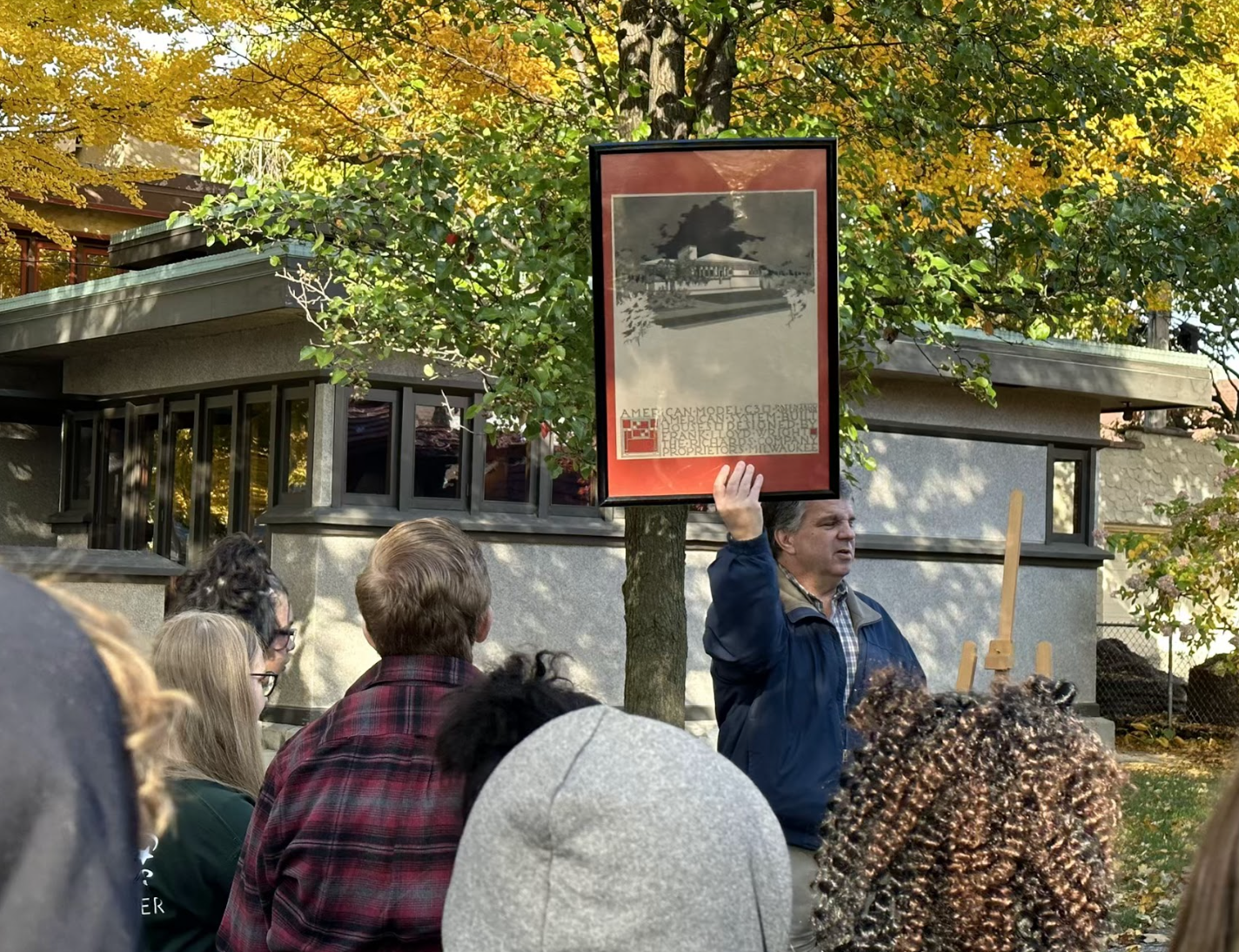 In Matt’s interdisciplinary English 9 Flex class Cornisha, Zoe, and Carter were working on a project that connected empathy to architecture. Matt reflects,
In Matt’s interdisciplinary English 9 Flex class Cornisha, Zoe, and Carter were working on a project that connected empathy to architecture. Matt reflects,
“Learning is a communal experience and that is what this was all about, we learned to work together. We took the Frank Lloyd Wright workshop model and applied it to our class. I think that’s where all these skills are built, and as a teacher, we’re more of coaches, we coach them through difficult situations. We did a lot of the front loading at the beginning of the year with mini projects and getting-to-know-you type of activities that broke the ice that established the tone and trust of moving forward and being successful.
“It all starts with building the bond, building the community, and then from there we can grow, then everything else is easy. Now you’re on a team, you’re not working alone taking notes sitting with a worksheet. You’re working on a team solving problems that adults in the business world are solving, from affordable housing, working with architects focused on this issue of how to deliver something aesthetically pleasing to everyone regardless of wealth, taking a design that would normally only be for wealthy clients and translating in a way so that somebody doesn’t get less.”
What was central to the success of this project was that students felt a sense of belonging and confidence. Cornisha quietly reflects, “I am a person who really doesn’t like talking to people because I’m shy and scared at first. But now I am more comfortable talking with other people, sharing my opinions and interacting with others. This project helped boost my confidence in sharing my ideas, because before I used to just keep them in. There wasn’t one moment that changed this for me, it happened over time.”
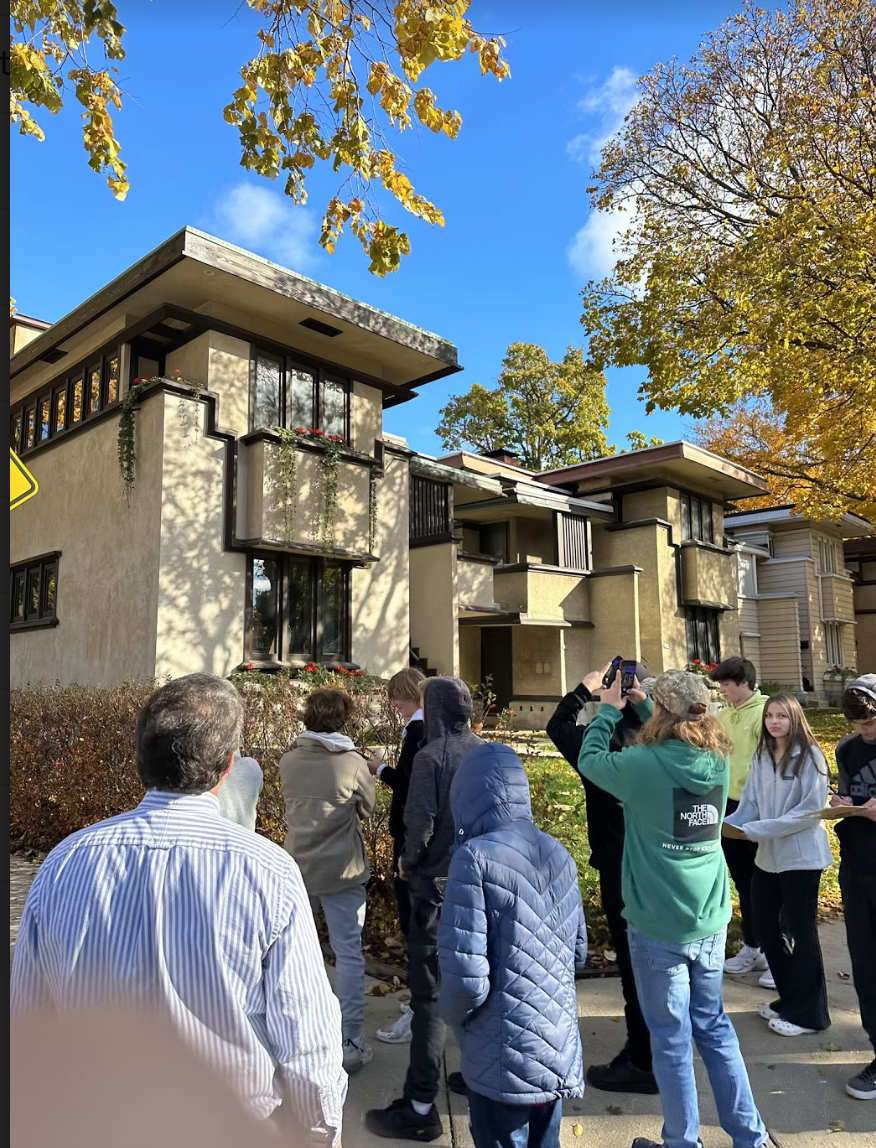 Matt wanted to demystify the working world and so he brought in subject matter experts from the world of architecture and real estate. He also took his students to Frank Lloyd Wright’s Burnham Block building and non-profit where they drew floor plans, built scale models, and developed a design board, and interior housing. This was not a one-and-done visit, and central to these experiences were the authentic relationships students were building with each other and the staff at Burnham Block. Carter states, “With this project, it opened up feeling comfortable with making connections and sharing ideas. The project helped with communication skills, we learned that instead of just debating and fighting it out we would rather consider each other’s ideas. If you have two ideas we could possibly mix them, or at least weigh the pros and cons.”
Matt wanted to demystify the working world and so he brought in subject matter experts from the world of architecture and real estate. He also took his students to Frank Lloyd Wright’s Burnham Block building and non-profit where they drew floor plans, built scale models, and developed a design board, and interior housing. This was not a one-and-done visit, and central to these experiences were the authentic relationships students were building with each other and the staff at Burnham Block. Carter states, “With this project, it opened up feeling comfortable with making connections and sharing ideas. The project helped with communication skills, we learned that instead of just debating and fighting it out we would rather consider each other’s ideas. If you have two ideas we could possibly mix them, or at least weigh the pros and cons.”
Piggybacking off of this, Zoe reflects, “This project helped with our social skills, kids these days really struggle with these, but we are now so much more open and willing to talk with each other. This project helped me realize that I can work with others, that I now know the process of working with them.” I cannot emphasize enough how much I love these statements. Through authentic relationship building these learners (Matt Included) was gaining team-building skills that are central to professional and personal success in life.
Human Connection + Purposeful Projects
One of the tenets of deeper learning is content mastery and in my work, as an educator, I have found that purposeful projects act as the fanning of a flame in skill growth because learners see the value of content acquisition as it allows them to actually do the work that progresses their project. I have witnessed teams of students get into a flow state, smiles on their faces constantly craving more time to further along their projects. The classroom now embodies a sports team, an artistic collective, and a team of entrepreneurs getting their ideas out into the world.
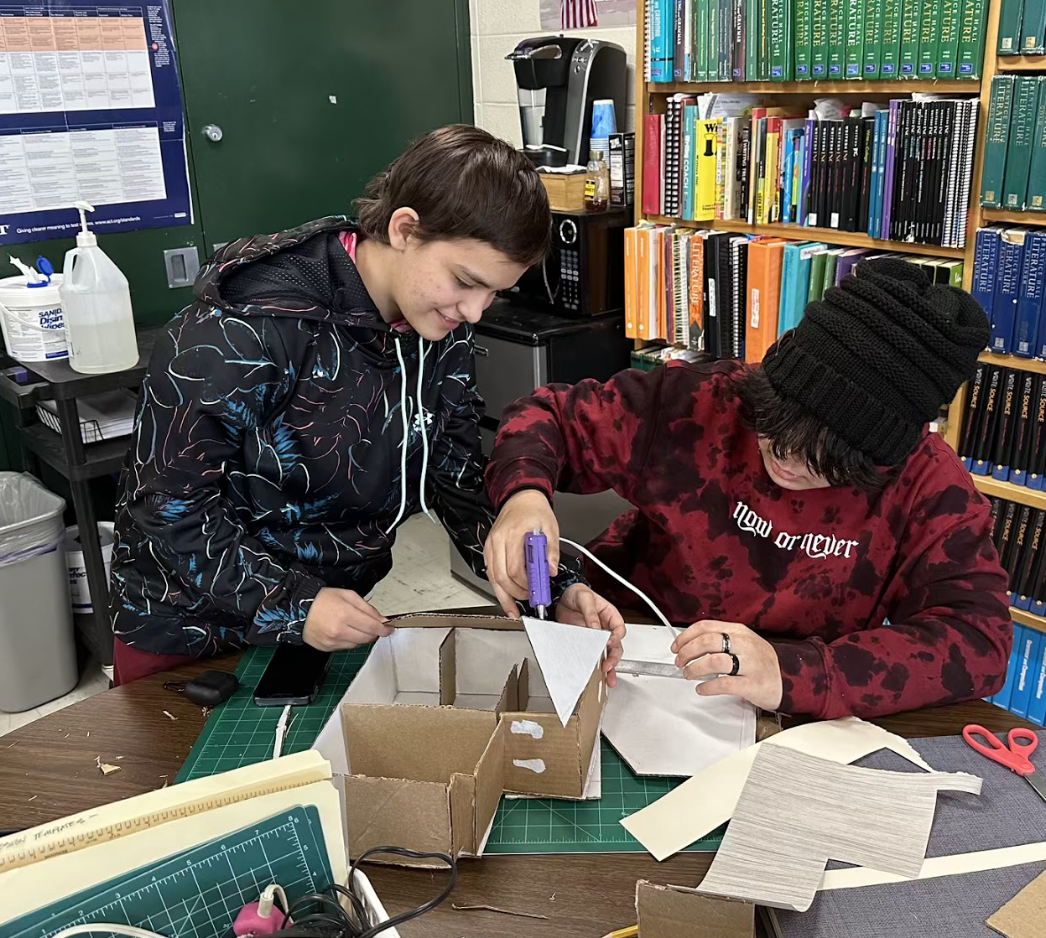 When talking about her group project Cornisha reflects, “The math part of the project where we had to measure our work, it was thanks to Carter and Zoe. They helped me and sat with me and worked on it, we sat down and talked about how we start by measuring, we were making scale. When they explained it to me it made more sense because they were my classmates and then when we got to building it, it was so much fun.” All of that work at the beginning centered around relationship building and trust, led to that moment Cornisha described. As a teacher and co-learner Matt reflects, “watching their process, seeing their laser focus, the perseverance was off the charts. The point where everyone had their plan, it was like bees in a hive, everyone was focused, everyone was helping each other out, and the conversations were collaborative. All of that pre-work that we did at the beginning of the year came to fruition within the project. This was the first project of the year and for this to happen only a month and a half in, was a high point for me. Wow, that was a moment that really struck me.”
When talking about her group project Cornisha reflects, “The math part of the project where we had to measure our work, it was thanks to Carter and Zoe. They helped me and sat with me and worked on it, we sat down and talked about how we start by measuring, we were making scale. When they explained it to me it made more sense because they were my classmates and then when we got to building it, it was so much fun.” All of that work at the beginning centered around relationship building and trust, led to that moment Cornisha described. As a teacher and co-learner Matt reflects, “watching their process, seeing their laser focus, the perseverance was off the charts. The point where everyone had their plan, it was like bees in a hive, everyone was focused, everyone was helping each other out, and the conversations were collaborative. All of that pre-work that we did at the beginning of the year came to fruition within the project. This was the first project of the year and for this to happen only a month and a half in, was a high point for me. Wow, that was a moment that really struck me.”
Having an Identity and Living Your Culture
So many schools, public, private, and charter struggle with defining their academic identities. West Allis School District has been so cohesive because it has built a strategy and identity around Deeper Learning, in turn choosing its identity. It has been so successful because it has rooted its culture in human connection. Towards the end of our call, Deidre reflected, “Framing our work around the deeper learning competencies is essential. One of those competencies that are vital for us is an academic mindset, where you feel that sense of belonging so that you want to work hard, so you feel good about yourself so that you want to contribute. Cornisha talked about being quieter and keeping to yourself, but someone created a space that was full of trust where her ideas were welcome. The ultimate goal is that we want students on our watch to feel the kind of confidence that these three have about learning and who they are becoming as people. There was a long pause on the call, and then Cornisha stated, “Putting all of yourself into your group and being active is huge. I am proud that I am more open, wanting to do more new things.”
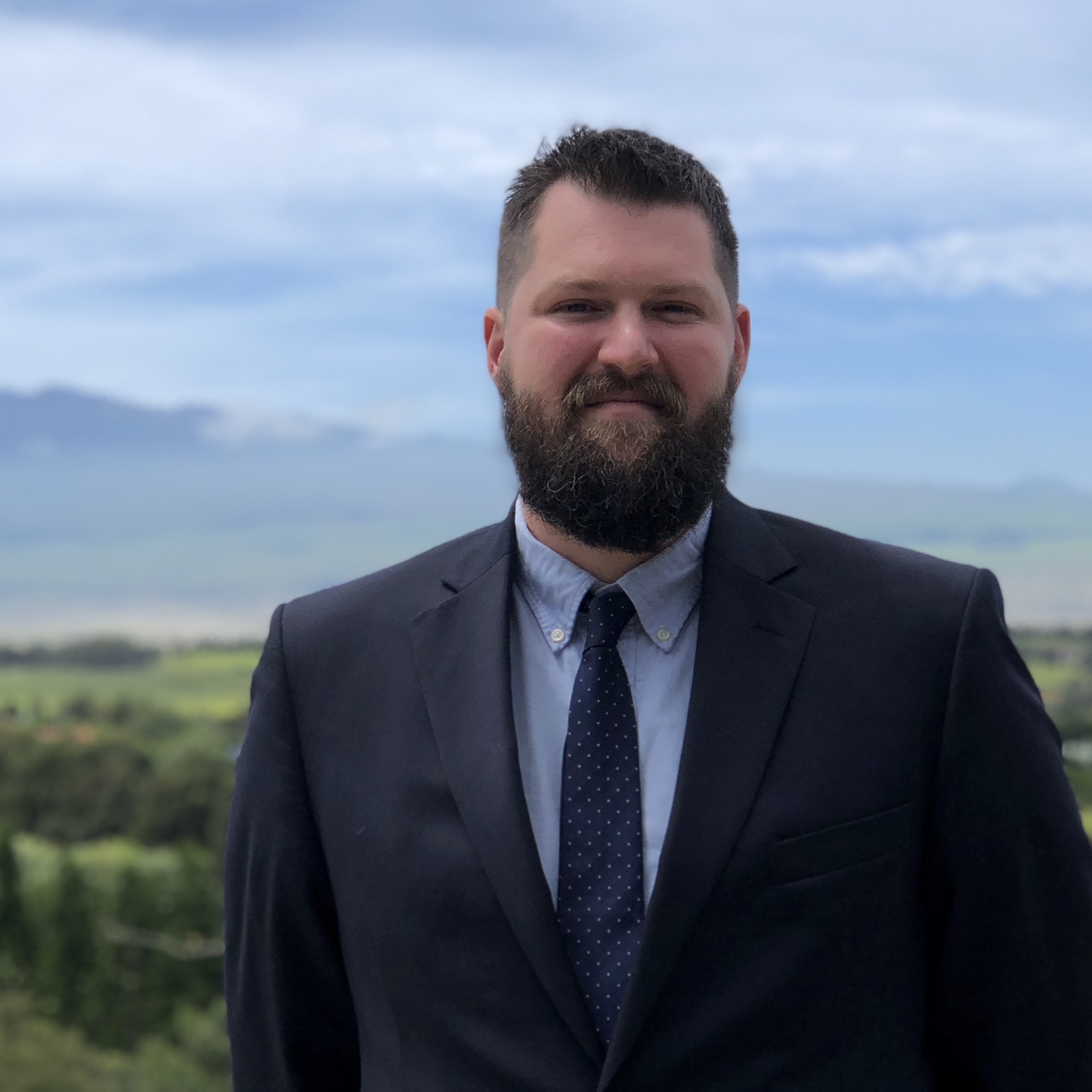




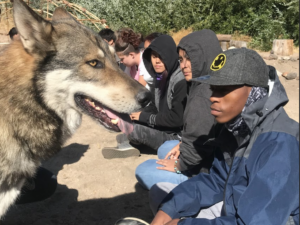

0 Comments
Leave a Comment
Your email address will not be published. All fields are required.